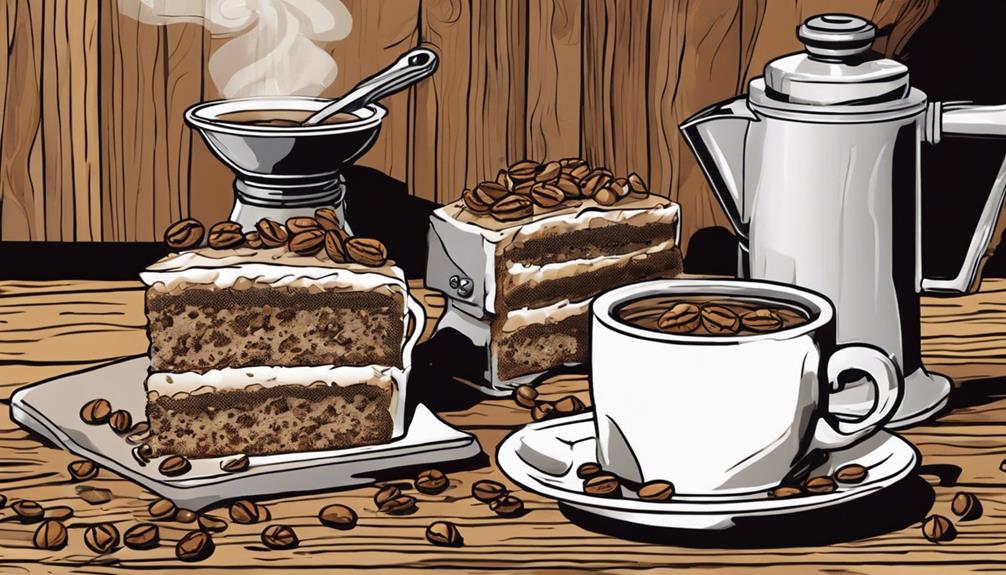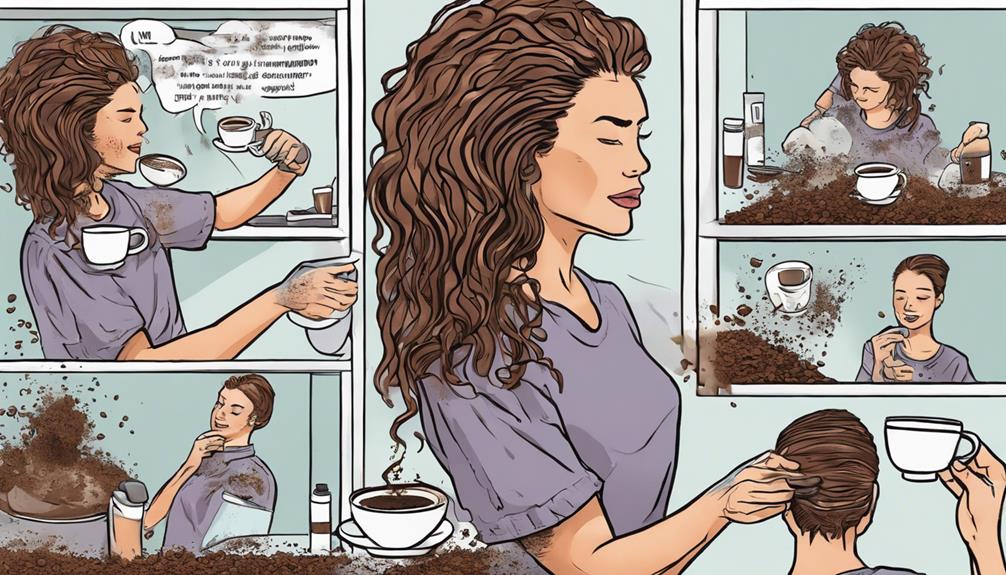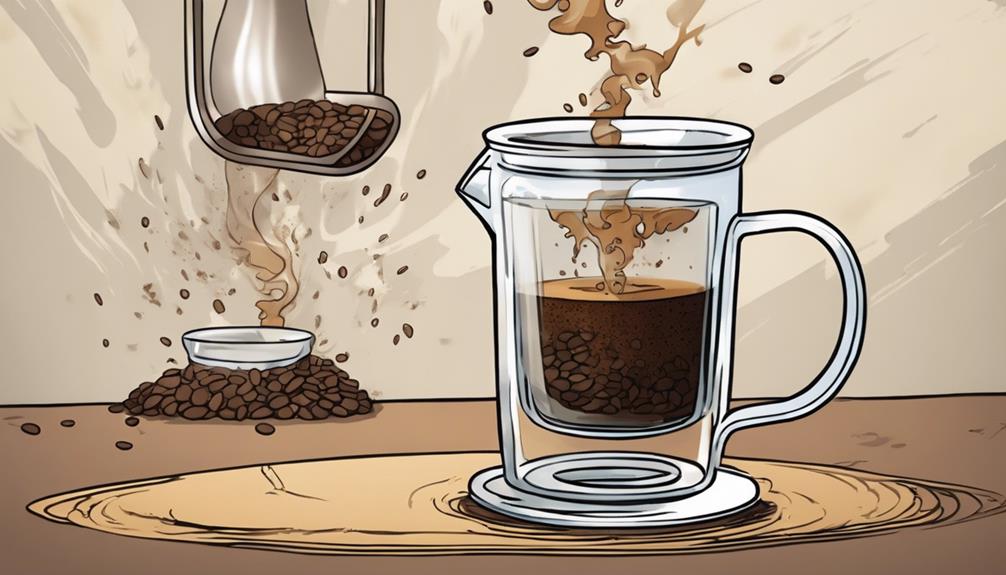To modify the temperature settings on your Bunn coffee maker, you may want to consider using dimmer options like incandescent triac-style dimmers. It is important to ensure there is proper ventilation and safety precautions in place when adjusting the heat. Another option to try is using a router speed control for more customized temperature adjustments. It is recommended to experiment with different methods in a controlled setting to determine the most efficient approach. If you need to make specific adjustments for your model, consult the control panel settings or circuit board adjustments. For expert guidance, aim for a temperature range of 170°F to 205°F for optimal brewing results. Achieving mastery over temperature control is essential for creating the perfect cup of coffee.
Key Takeaways
- Use the control panel settings on models like BXB for temperature adjustments.
- Adjust the circuit board settings for temperature control on models like CWTF15.
- Follow specific steps for water temperature adjustments on VPR series machines.
- Tailor water temperature on models like VLPF for optimal brewing conditions.
- Consult the Bunn coffee maker manual for model-specific temperature customization.
Dimmer Options for Heat Adjustment
For adjusting the temperature on your Bunn coffee maker, consider utilizing a 600W incandescent triac-style dimmer for controlling the heating element. These dimmers are designed to switch on and off rapidly, around 120 times per second, making them efficient for adjusting the temperature of the heating elements.
You can also explore using a variable AC transformer or a lighting dimmer as alternatives for adjusting the heat element's temperature. When using a dimmer for temperature control, it's important to evaluate the necessity of a thermostat to interrupt the 120V feed effectively.
Experimenting with a lighting dimmer has shown to be an effective tool for adjusting the heat element's temperature on a Bunn coffee maker. By testing different dimmer options and understanding their capabilities, you can fine-tune the temperature settings of your coffee maker to brew the perfect cup every time.
Safety Measures in Heat Modification

When adjusting the temperature on your Bunn coffee maker, remember to prioritize safety measures. Proper ventilation is essential to prevent overheating when modifying the heat element.
Additionally, implementing a diode for power control can help prevent electrical issues.
Ventilation for Dimmers
Proper ventilation is necessary when utilizing dimmers to regulate the heat element on a Bunn coffee maker to prevent overheating and secure safety.
When adjusting the temperature using dimmers, make sure that there's adequate airflow to dissipate any excess heat generated during the process. Testing dimmers in a controlled environment before installation in the kitchen is vital to verify their effectiveness and performance.
To optimize safety measures, consider incorporating a diode in series with the heat element when using dimmers for temperature adjustments. Additionally, using specialized infinite heat switches designed for restaurant-grade equipment can enhance precision and safety in heat control modifications.
Evaluate the necessity of a specialized heat control device to uphold safety standards and mitigate potential hazards when modifying the heat element on a Bunn coffee maker.
Diode Power Control
How can you guarantee safety when adjusting the heat element of a Bunn coffee maker using diode power control?
When working with diode power control to modify the heat element of your Bunn coffee maker, ensuring proper ventilation and heat dissipation is essential.
Before installation, test the diodes in a controlled environment to confirm their effectiveness and safety in adjusting power to the heating element.
To provide controlled power reduction without compromising safety, consider incorporating a diode in series with the element.
For precise and safe control over the heat element, opt for specialized infinite heat switches designed for restaurant-grade equipment.
Evaluate the necessity of a specialized heat control device to regulate temperature effectively while maintaining safety when modifying your Bunn coffee maker's heat element.
Alternate Heat Control Methods

Consider integrating a diode or router speed control as alternative methods for adjusting the heat element in your Bunn coffee maker. These options offer flexibility in customizing the temperature settings to suit your preferences.
By exploring different switch options, you can achieve full power for a quick heat-up or reduced power for a more controlled and prolonged heating process. The Harbor Freight router speed control is a cost-effective solution worth evaluating for modifying the heat element in your Bunn coffee maker. When making adjustments, always prioritize safety by implementing a fuse to prevent overheating and guarantee proper control.
Utilizing a diode in your coffee maker can effectively reduce power consumption, allowing for more precise temperature adjustments. This method provides you with the ability to fine-tune the heat output according to your desired brewing specifications.
Prototype Development for Temperature Adjustment
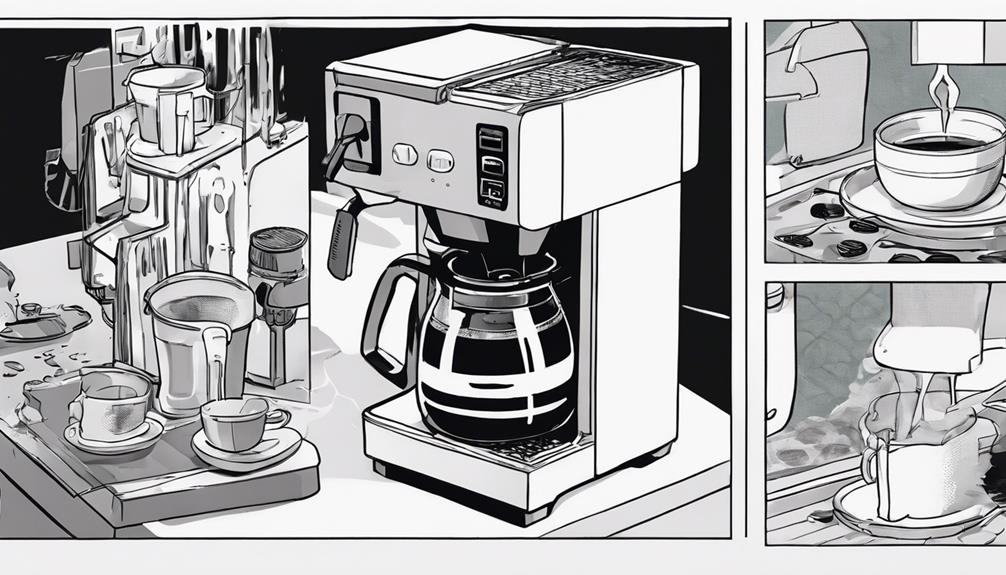
When developing your prototype for temperature adjustment on the Bunn coffee maker, remember to test different temperature control methods. This could include using a thermostat, a variable resistor, or a microcontroller. Each method may have different effects on the final temperature of the water, and it’s important to find the one that works best for brewing strong coffee. Testing these different temperature control methods will ensure that the final product is able to consistently deliver the desired temperature for optimal coffee extraction when brewing strong coffee.
Evaluate the efficiency of your prototype by considering factors like power requirements and heat dissipation.
Aim for a balance between precise temperature adjustments and energy efficiency to create an effective mechanism.
Testing Temperature Control Methods
To test temperature control methods for the Bunn coffee maker, develop a prototype using diodes and switches. By creating a prototype with these components, you can effectively assess the temperature adjustment capabilities before implementing them in the actual coffee maker. It's essential to balance power requirements and heat dissipation during the prototype development phase to guarantee the system operates efficiently.
When testing the prototype, focus on conducting controlled experiments to evaluate the accuracy of temperature control and energy efficiency. This will help you determine the effectiveness of the chosen components in regulating the coffee maker's temperature. Explore different combinations of diodes and switches to find the best setup that provides the desired temperature adjustments.
Consider the following table to compare different temperature control methods using diodes and switches:
| Temperature Control Method | Accuracy | Energy Efficiency |
|---|---|---|
| Diode A + Switch X | High | Medium |
| Diode B + Switch Y | Medium | High |
| Diode C + Switch Z | Low | Low |
Prototype Efficiency Evaluation
To evaluate the effectiveness of the temperature adjustment prototype for the Bunn coffee maker, prioritize evaluating its power requirements and heat dissipation capabilities.
When testing the prototype, focus on how well it maintains the desired temperature range by analyzing the performance of the control thermostat.
It's important to strike a balance between accurate temperature control and energy efficiency in the design. Consider incorporating components like diodes and switches to achieve efficient temperature adjustments.
Testing the prototype in a controlled environment before implementation is crucial to ensure functionality and safety.
By appraising power consumption and the ability to dissipate heat efficiently, you can determine the overall effectiveness of the prototype.
Pay close attention to how well the control thermostat responds to adjustments and maintains the set temperature, as this is essential to the success of the temperature adjustment mechanism on the Bunn coffee maker.
Equipment Recommendations for Heat Management

Consider utilizing specialized parts like infinite heat switches for efficient temperature control in your Bunn coffee maker.
To enhance heat management in your coffee maker, here are some equipment recommendations to explore:
- Evaluate Compatibility: Check if a 100W incandescent bulb and warming plate work effectively together for heat management.
- Diodes for Fine-Tuning: Discover the benefits of using diodes for precise power adjustment to fine-tune the temperature of your coffee maker.
- Harbor Freight Router Speed Control: Research the functionality of this tool as an alternative method for heat management in your Bunn coffee maker.
- Specialized Heat Control Devices: Look into devices specifically designed for heat control to ensure precise and safe temperature adjustments in your coffee maker.
- Customized Heat Solutions: Explore customized solutions tailored to your Bunn coffee maker for optimal heat management performance.
Common Temperature Issues With Bunn Coffee Makers

Experiencing common temperature issues with your Bunn coffee maker can have a significant impact on the quality of your brewed coffee. Issues such as water not heating up properly can result in weak coffee output.
Incorrect temperature settings may lead to your coffee not staying warm or brewing at the desired temperature, affecting the overall taste and performance. Problems with temperature control can compromise the brewing process and the flavor of your coffee.
To address these temperature-related issues, regular maintenance like deliming and cleaning is essential. By ensuring that your Bunn coffee maker is properly maintained and understanding how to adjust its temperature settings, you can optimize the brewing results and enjoy a delicious cup of coffee every time.
Troubleshooting Temperature Problems

Investigate the temperature control knob and thermostat on your Bunn coffee maker to troubleshoot any temperature problems efficiently.
To address water temperature issues effectively, follow these steps:
- Verify the temperature control setting to ascertain it aligns with the desired heat level.
- Check the functionality of the heating element to ensure it's operating correctly.
- Inspect the power source to rule out any electrical issues impacting the water temperature.
- Look for blockages in the water lines that could be impeding the flow and affecting the brewing temperature.
- Measure the water temperature at different brewing stages to assess consistency and identify any fluctuations that may need adjustment.
Specific Model Temperature Adjustments
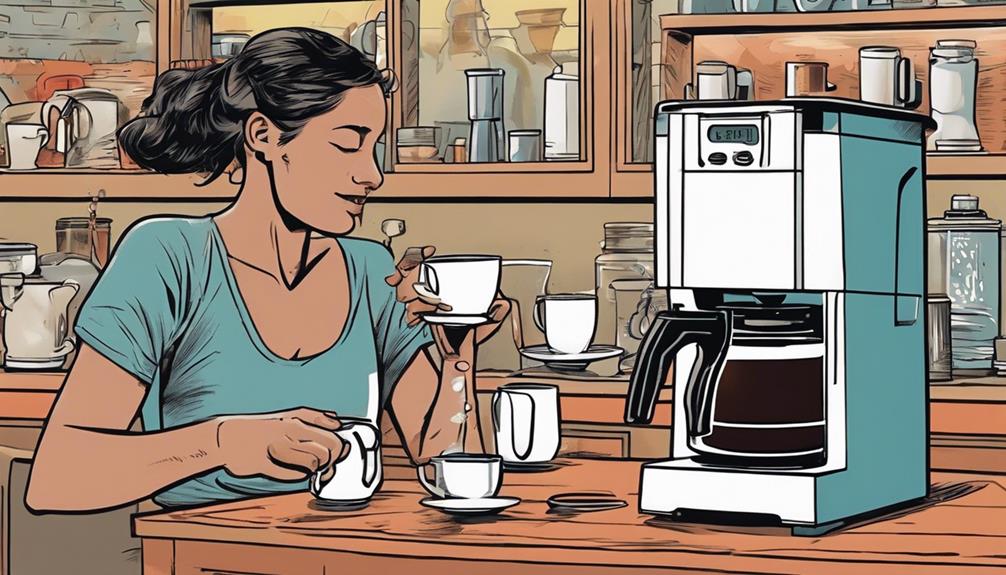
For specific Bunn coffee maker models, understanding the unique temperature adjustment settings is essential for best brewing results. Different Bunn models such as BXB or CWTF15 have specific temperature adjustment settings either on the control panel or circuit board. The VPR series and VLPF models may require particular steps to adjust the water temperature for ideal brewing. Crescendo models feature temperature controls that can be customized to suit individual preferences. It's important to grasp the specific temperature adjustment mechanisms for each Bunn model to achieve the desired brewing outcomes. To help you navigate the temperature adjustments on your Bunn coffee maker more effectively, refer to the table below:
| Bunn Model | Temperature Adjustment Method |
|---|---|
| BXB | Control panel settings |
| CWTF15 | Circuit board adjustments |
| VPR series | Specific steps for water temperature |
| VLPF | Tailored water temperature adjustments |
Expert Advice on Temperature Settings

To enhance your understanding of temperature settings on your Bunn coffee maker, consider seeking expert advice on adjusting the water temperature for best brewing results.
Here are some key points to keep in mind:
- Temperature Range: Bunn coffee makers typically offer a temperature setting range between 170°F to 205°F for best brewing.
- Locating the Control: Find the temperature control knob on the thermostat to adjust the water temperature according to your preference.
- Customization: The temperature control knob allows you to easily increase or decrease the water temperature to suit your coffee beans and taste.
- Brewing Precision: Understanding the ideal brewing temperature for your specific coffee beans can have a significant impact on the flavor and quality of your coffee.
- Manual Reference: Always consult your Bunn coffee maker manual for model-specific instructions on adjusting the temperature settings for the finest brewing experience.
Frequently Asked Questions
Why Is My Bunn Coffee Maker Not Getting Hot Enough?
Is your Bunn coffee maker not getting hot enough? Check the thermostat setting, test the heating element with a multimeter, clear any blockages, clean for scale buildup, and refer to the manual for troubleshooting steps specific to your model.
What Temp Should Bunn Brew At?
Brew your coffee in a Bunn coffee maker at a ideal temperature range of 195-205°F. This guarantees proper extraction of flavors and aromas, enhancing your coffee-drinking experience with a delicious and well-balanced brew.
How Do I Calibrate My Bunn Coffee Maker?
To calibrate your Bunn coffee maker, access the control board, locate the temperature adjustment knob, and tweak it like tuning a guitar string until you hit your desired brewing temperature. Regular adjustment guarantees consistent coffee quality.
Where Is the Program Button on a Bunn Coffee Maker?
To find the program button on your Bunn coffee maker, check the control panel. Press it to enter programming mode for adjusting settings like brewing time and temperature. Refer to the user manual for specific instructions.
Conclusion
So, there you have it – a few temperature tricks to help you get the perfect cup of coffee from your Bunn coffee maker.
Remember to handle with care when adjusting heat settings, and always prioritize safety.
With a little experimentation and some expert advice, you'll be able to fine-tune your machine to suit your preferences.
Happy brewing!


